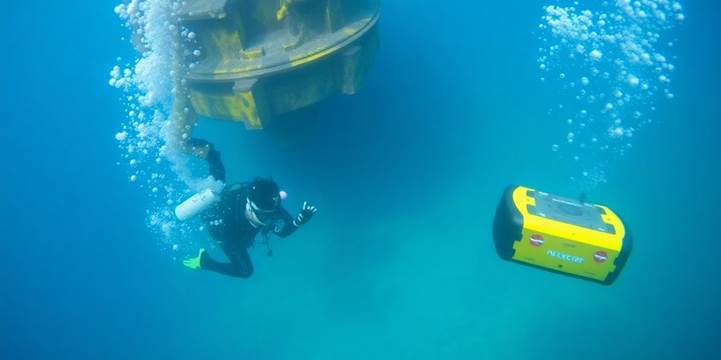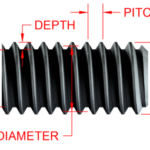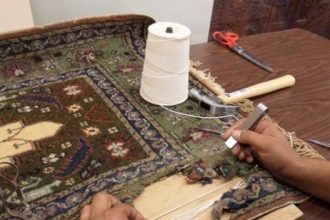Commercial diving and ROV inspections are essential for underwater tasks. They each bring unique strengths to the table. Think of them as partners tackling the challenges beneath the surface.
- What is Commercial Diving?
- Understanding ROV (Remotely Operated Vehicle) Inspections
- The Importance of Safety in Diving and ROV Operations
- Types of Commercial Diving Services
- Advantages of Using ROVs for Inspections
- Oil and Gas Industry
- Marine Research and Environmental Monitoring
- Applications of Commercial Diving and ROV Inspections
- Technological Advancements in Diving and ROV Inspections
- Choosing the Right Service Provider
- Conclusion: The Future of Commercial Diving and ROV Inspections
- Final Thoughts on Commercial Diving and ROV Inspections
These methods allow us to explore and maintain underwater structures. They also help with repairs and data collection. It’s a world of innovation under the sea.
Both commercial diving and ROV inspections play a big role in various industries. This includes oil and gas, marine research, and infrastructure maintenance.
Types of Commercial Diving Services
Commercial diving covers a range of services. This includes inspection, repair, and construction.
Different types of diving exist for specific tasks. For example, there’s surface-supplied diving and saturation diving.
Each type requires specialized training and equipment. Divers often work in challenging conditions.
Advantages of Using ROVs for Inspections
ROVs offer a safe alternative to human divers. They can access dangerous or confined spaces.
ROVs provide real-time video and data. This allows for thorough inspections without putting people at risk.
ROVs are becoming increasingly popular for underwater inspections. They offer a cost-effective and efficient way to assess structures and gather data. This technology is changing how we approach underwater work.
ROVs can stay underwater longer than divers. They aren’t limited by dive times or decompression requirements.
ROVs can be equipped with various sensors and tools. This includes sonar, cameras, and manipulators.
What is Commercial Diving?
Commercial diving? It’s not your weekend scuba trip. It’s a whole different ballgame. Commercial diving is serious work done underwater, often in tough conditions.
These divers are the unsung heroes of the underwater world. They tackle jobs most people can’t even imagine. Think construction, repair, and inspection work, all happening beneath the surface.
It’s a career that demands skill, training, and a whole lot of courage. Commercial diving is essential for many industries.
Types of Commercial Diving Services
Commercial divers do all sorts of things. It really depends on the industry and the specific job.
- Underwater welding and cutting
- Inspecting structures like pipelines and platforms
- Repairing and maintaining underwater equipment
Commercial divers are often called in when things go wrong underwater. They might be involved in salvage operations, recovering objects or even entire vessels from the seabed. It’s a high-stakes job that requires quick thinking and problem-solving skills.
Underwater construction is a big part of commercial diving. They build and maintain things like docks, bridges, and offshore oil rigs. It’s physically demanding work, but it’s also incredibly important.
Understanding ROV (Remotely Operated Vehicle) Inspections
ROV inspections are changing how we look at underwater tasks. They bring a new level of safety and efficiency. Let’s explore what makes them so useful.
ROVs, or Remotely Operated Vehicles, are basically underwater drones. They’re controlled from the surface and can go where divers can’t. This opens up a whole new world of possibilities for inspections.
These vehicles come in different sizes and with different capabilities. Some are small enough to carry, while others are huge and can handle heavy work.
Advantages of Using ROVs for Inspections
ROVs can access dangerous or hard-to-reach areas. This is a huge advantage over traditional diving methods. They keep people out of harm’s way.
ROVs can stay underwater much longer than human divers. This means inspections can be more thorough and take less time overall. Efficiency is key.
ROVs are equipped with cameras, sonar, and other sensors. This allows for detailed inspections and data collection. The data can then be used to make informed decisions about maintenance and repairs.
Using ROVs for inspections reduces risks and costs. They provide a safe and efficient way to assess underwater structures and environments.
The Importance of Safety in Diving and ROV Operations
Safety is paramount in both commercial diving and ROV operations. These environments can be unforgiving. A strong safety culture protects personnel and ensures mission success.
Effective safety protocols minimize risks. They also promote responsible practices. This is important for the well-being of everyone involved.
ROVs play a big role in improving safety. They can inspect areas before divers enter the water. This reduces the risk of the unknown.
Types of Commercial Diving Services
Commercial diving is inherently risky. Divers face hazards like low visibility and strong currents. Equipment failure can also lead to dangerous situations.
ROVs help mitigate these risks. They can perform initial site assessments. This allows divers to better understand the environment before diving.
Proper training and equipment are essential. Regular drills and safety checks are also important. These measures help prevent accidents and ensure a safe working environment.
Advantages of Using ROVs for Inspections
ROVs offer several safety advantages. They can access confined or hazardous areas. This eliminates the need for divers to enter these dangerous spaces.
ROVs can also provide real-time monitoring of divers. This allows for quick response in case of an emergency. ROVs are not limited by dive times or decompression requirements.
Using ROVs improves safety and efficiency. They reduce risks and allow for continuous operation. This makes them a valuable tool in commercial diving.
Oil and Gas Industry
The oil and gas industry relies heavily on diving and ROV inspections. These operations often involve working in deep water and around dangerous equipment. Safety is a top priority.
ROVs are used to inspect pipelines and platforms. They can detect leaks and structural damage. This helps prevent accidents and protect the environment.
Commercial diving teams perform repairs and maintenance. They follow strict safety protocols to minimize risks. This ensures the safety of the divers and the integrity of the infrastructure.
Marine Research and Environmental Monitoring
Marine research and environmental monitoring also benefit from diving and ROV operations. These activities often involve exploring remote and challenging environments. Safety is crucial for protecting researchers and the environment.
ROVs are used to collect data and samples. They can explore areas that are too dangerous for divers. This allows researchers to study marine life and monitor environmental conditions.
Commercial diving teams assist with research projects. They follow strict safety protocols to minimize their impact on the environment. This ensures the sustainability of marine research efforts.
Applications of Commercial Diving and ROV Inspections

Commercial Diving and ROV Inspection Services are used in many different fields. They help with tasks that are too dangerous, difficult, or expensive for humans to do alone. Let’s look at some specific examples.
These services are not just about fixing things underwater. They also play a big role in keeping things safe and making sure projects run smoothly. It’s a mix of technology and skilled people working together.
ROVs and divers often work together. ROVs can check out a site first, and then divers can go in to do the more complicated work. This makes everything safer and more efficient.
Oil and Gas Industry
Commercial Diving and ROV Inspection Services are super important for offshore oil rigs. They check pipelines, platforms, and other underwater structures. This helps prevent leaks and other problems.
ROVs can go places that are too dangerous for divers. They can inspect deep-sea equipment and find problems early. This saves time and money in the long run.
Regular inspections are key to keeping oil and gas operations safe. They help make sure everything is working right and prevent accidents.
Marine Research and Environmental Monitoring
Commercial Diving and ROV Inspection Services help scientists study the ocean. They can collect samples, observe marine life, and map the seafloor. This gives us a better understanding of the underwater world.
ROVs can explore shipwrecks and other underwater sites. They can also monitor pollution and other environmental problems. This helps us protect our oceans.
ROVs are great for long-term monitoring. They can stay underwater for long periods and collect data. This is really helpful for tracking changes in the environment.
Technological Advancements in Diving and ROV Inspections
Technology keeps changing things, even underwater. Commercial diving and ROV inspections are no exception. New tools and methods are making these jobs safer, faster, and more effective. It’s a wild time to be in this field.
ROVs are getting smarter. They now have better cameras, sensors, and ways to grab things. This means they can do more complex tasks that used to need human divers. It’s all about pushing the limits of what these machines can do.
These changes aren’t just cool gadgets. They’re changing how we approach underwater work. From oil rigs to marine research, technology is making a big splash in commercial diving and ROV inspections.
Choosing the Right Service Provider
Picking the right company for commercial diving or ROV inspections? It’s a big deal. You want someone reliable. Someone who knows their stuff.
Consider their experience. Look at past projects. Do they have the right certifications?
Think about their safety record. It speaks volumes. Don’t skip this step.
Things to Consider
- Check their certifications. Are they up-to-date?
- Do they have the right equipment? ROV inspections need specific tools.
- What’s their response time? Emergencies happen.
A good service provider will be transparent about their processes. They’ll answer your questions. They’ll provide detailed reports.
Don’t rush the decision. It’s worth the time to find the best fit. Your project depends on it.
Conclusion: The Future of Commercial Diving and ROV Inspections

The world of underwater work is changing. Commercial diving and ROV inspections are becoming more intertwined. What does this mean for the future?
Technology keeps pushing the boundaries. Both divers and ROVs are benefiting from these advancements. It’s an exciting time for the industry.
The collaboration between humans and machines will define the future. Expect to see even more sophisticated tools and techniques emerge.
Final Thoughts on Commercial Diving and ROV Inspections
In summary, commercial diving and ROV inspections are both vital for ensuring safety and efficiency in underwater operations. Divers bring hands-on skills to complex tasks, while ROVs offer a safer way to inspect hazardous areas without putting humans at risk. This teamwork not only enhances safety but also cuts down on costs and downtime. As technology continues to evolve, the collaboration between divers and ROVs will likely become even more effective, making underwater inspections smoother and safer for everyone involved. Whether it’s checking water tanks or inspecting underwater structures, both methods play a key role in maintaining our underwater infrastructure.














